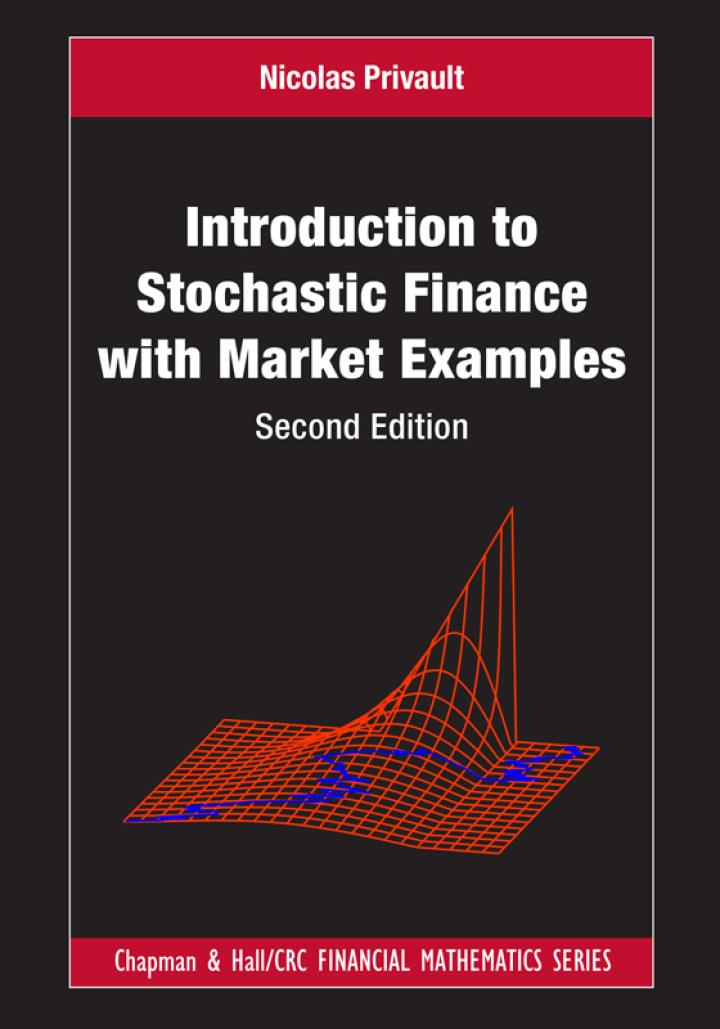a) Compute the Black-Scholes call and put Vega by differentiation of the Black-Scholes function [ g_{mathrm{c}}(t, x)=mathrm{Bl}(x,
Question:
a) Compute the Black-Scholes call and put Vega by differentiation of the Black-Scholes function
\[
g_{\mathrm{c}}(t, x)=\mathrm{Bl}(x, K, \sigma, r, T-t)=x \Phi\left(d_{+}(T-t)ight)-K \mathrm{e}^{-(T-t) r} \Phi\left(d_{-}(T-t)ight)
\]
with respect to the volatility parameter \(\sigma>0\), knowing that
\[
\begin{align*}
-\frac{1}{2}\left(d_{-}(T-t)ight)^{2} & =-\frac{1}{2}\left(\frac{\log (x / K)+\left(r-\sigma^{2} / 2ight)(T-t)}{|\sigma| \sqrt{T-t}}ight)^{2} \\
& =-\frac{1}{2}\left(d_{+}(T-t)ight)^{2}+(T-t) r+\log \frac{x}{K} \tag{6.43}
\end{align*}
\]
How do the Black-Scholes call and put prices behave when subjected an increase in the volatility parameter \(\sigma\) ?
b) Compute the Black-Scholes Rho by differentiation of the Black-Scholes function \(g_{\mathrm{c}}(t, x)\). How do the Black-Scholes call and put prices behave when subjected an increase in the interest rate parameter \(r\) ?
Step by Step Answer:

Introduction To Stochastic Finance With Market Examples
ISBN: 9781032288277
2nd Edition
Authors: Nicolas Privault





